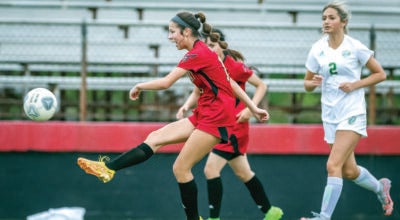NASCAR feeling economic effects more and more
Published 12:00 am Tuesday, July 8, 2008
By Jenna Fryer
Associated Press
CHARLOTTE ó Chip Ganassi shocked the NASCAR industry when he shut down Dario Franchittiís unsponsored race team, putting last yearís IndyCar Series champion and 71 other employees out of work.
That it happened to Ganassi, a multi-car owner who just six weeks ago won the Indianapolis 500, was a wake-up call to every team owner not named Childress, Gibbs, Hendrick or Roush.
These are tough economic times, and the sagging market is finally affecting NASCAR in nearly every facet of the industry.
When the season opened at Daytona International Speedway in February, 53 cars attempted to make the race. On the return trip last weekend, only 45 cars showed up, six of which lacked full sponsorship and are operating on shoestring budgets. And there were huge swaths of empty seats in the grandstands for Saturday nightís main event.
It all coincided with the June car and truck sales reports, which forecast gloom and doom for NASCARís participating automakers.
General Motors Corporation reported an 18.2 percent drop in sales as Merrill Lynch downgraded GM shares to iunderperformî while warning that bankruptcy is not out of the question. The analysis contributed to GM shares dropping to a 54-year low.
Ford Motor Company reported a 27.9 percent drop, and Toyota showed a 21.4 percent sales decline.
But the biggest danger, according to JPMorgan auto analyst Himanshu Patel, lies with Chrysler. Sales are down 22 percent, and Patel last week warned the automaker could be forced to file for bankruptcy protection or sell off parts of its business in the second half of 2009 if industry conditions donít improve.
The automakers spend an estimated combined $500 million annually on NASCAR programs ó funds that could shrink, or even disappear, if conditions donít improve. And deep-pocketed sponsors also are losing the budgets they once had to splash their logos on the front of a race car.
As more big businesses suffer, fewer sponsorship opportunities will exist. Scratch Starbucks off the list of potential new NASCAR money ó on the same day Ganassi made his cuts, Starbucks said it will close 600 stores.
NASCAR chairman Brian France is adamant his family-owned business ebbs and flows with the economy, and points out that a little over a year ago, he was being questioned about an overly saturated market of heavily funded race teams in the premier Sprint Cup Series.
iToo many cars, too many well-funded teams ó theyíre going to be disappointed when they (fail to qualify). What are you going to do? Expand the field? Tell me what you are going to do,î France said, mimicking the questions he was asked a year ago.
iWhat we said then is true today: These run in cycles. Weíre not immune to a difficult economy. We have had a number of renewals in the sponsorship areas … at very high rates, to teams that are performing well. Weíll always have teams that are not performing well that will be more challenged to keep sponsors, and that is amplified when we have a tight economy. Itís going to always run in cycles. We just continue to deliver value for the sponsors and the teams, and we will be OK.î
Not everyone is as confident that things will be OK.
Many are adamant the rich are getting richer, while everyone else is getting left behind.
Team owner Richard Childress has signed Caterpillar and General Mills to sponsor his cars next season, and heís expected to soon land UPS, as well. All three companies are moving from less-successful teams, leaving Bill Davis Racing, Petty Enterprises and Michael Waltrip Racing scrambling to find financing ó any kind of money at all Itís doubtful those teams will secure anything close to the $20 million or more in annual funding that the best teams attract.
Based on recent contract announcements, it seems only 24 cars currently have full sponsorship in place for the 2009 season. Some have massive budgets, others are settling for what they can get. In the meantime, many companies are finding that to stay in NASCAR, they must do so at a reduced price.
Itís created a situation where a sponsor might be shopping an $8 million to $10 million deal around the garage, determining just what it can get for the money.
For Roush-Fenway Racing, that price might buy a handful of races as a primary sponsor. But Davis, Waltrip or even Ganassi might sell a whole season at that price just to get some cash flowing into the organization.





